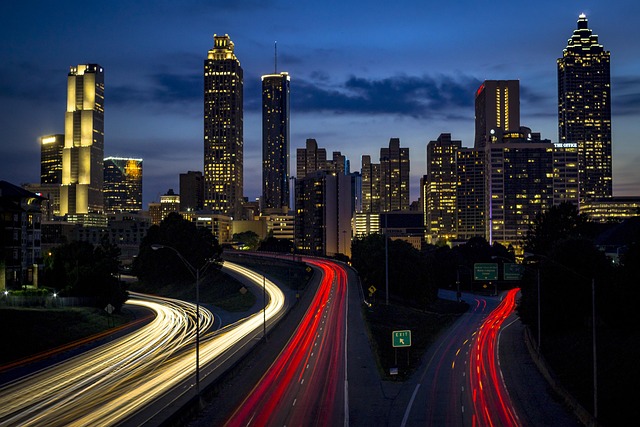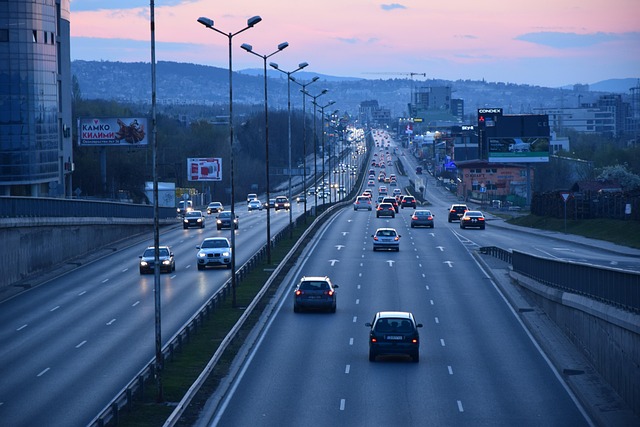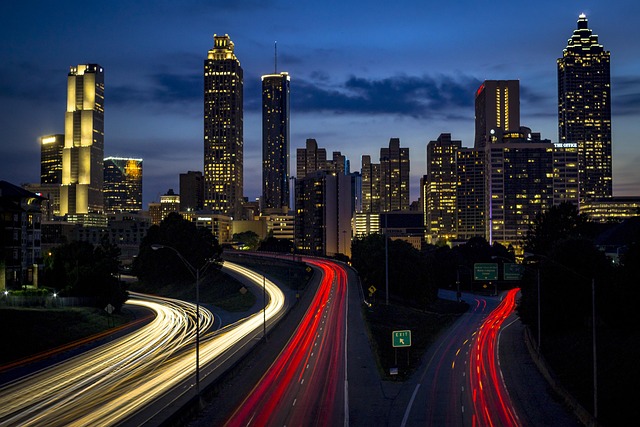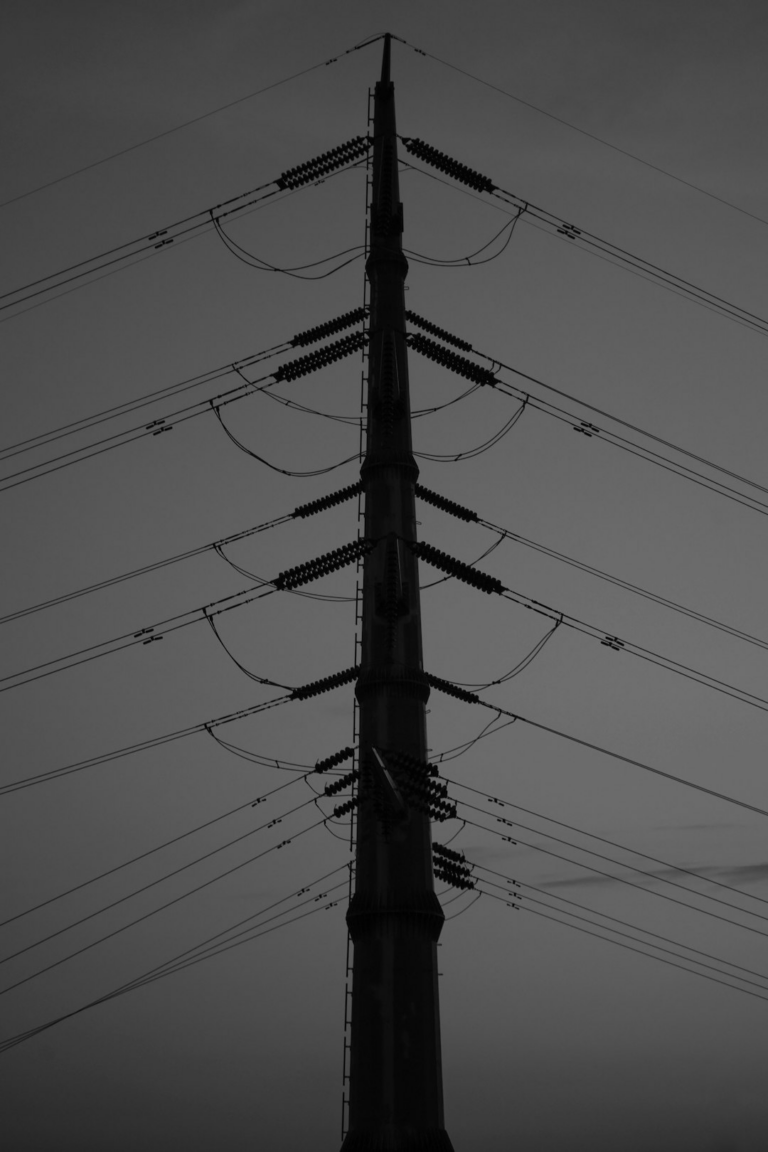
Karachi, Pakistan's economic center, relies on an extensive motorway network for local and regional connectivity. Its diverse public transport system includes buses, mini-buses, and rapid transit systems, with key options near the Karachi Motorway offering easy access to suburbs. While facing traffic congestion due to urbanization, Karachi is modernizing its transport infrastructure with bus rapid transit (BRT), integrated apps, and electric vehicle adoption to enhance efficiency, reduce pollution, and improve residents' quality of life.
Karachi, Pakistan’s vibrant metropolis, boasts an intricate motorway network that serves as a crucial backbone for its transportation system. This article explores the vital role of public transport in shaping the city’s urban landscape, focusing on options near Karachi’s motorway junction points. We delve into challenges hindering expansion and present a glimpse into potential future scenarios, emphasizing the city’s ongoing pursuit of efficient, sustainable mobility solutions tailored to its unique character and growing population.
- Understanding Karachi's Motorway Network
- The Role of Public Transport in Karachi
- Key Public Transport Options Near the Motorway
- Challenges and Opportunities for Expansion
- A Glimpse into the Future of Public Mobility in Karachi's Metropolitan Area
Understanding Karachi's Motorway Network

Karachi, Pakistan’s economic powerhouse, boasts an extensive motorway network that facilitates both local commuting and seamless connectivity to surrounding areas. This intricate system of motorways, including the iconic Karachi Motorway (M-9), acts as a lifeline for the bustling metropolis. The M-9, in particular, is a key artery connecting various parts of the city, offering efficient travel routes and easing traffic congestion.
Understanding this network is crucial for navigating the diverse transportation options available in Karachi. With numerous bus services, rapid transit systems, and private transport operators utilizing these motorways, commuters can expect well-connected trips across the metropolitan area. The efficiency of the motorway system not only reduces travel time but also contributes to the overall economic productivity of the region.
The Role of Public Transport in Karachi

In Karachi, public transport plays a pivotal role in connecting diverse neighborhoods and facilitating daily commutes for millions of folks. With a bustling metropolis like this one, efficient and accessible transportation is essential to navigate the city’s labyrinthine streets. The primary modes of public transport in Karachi include buses, mini-buses (known as ‘rio’ or ‘auto-rickshaws’), and an emerging network of rapid transit systems. These options cater to various travel needs, offering affordable and sometimes faster alternatives to private vehicles.
The availability of public transport near Karachi Motorway is particularly significant as it provides convenient access to key locations within the city and its suburbs. The motorway itself serves as a vital artery for intercity travel, with numerous bus services linking it to different parts of Karachi. This efficient network not only reduces traffic congestion but also offers a more sustainable and environmentally friendly way for residents to traverse the urban landscape.
Key Public Transport Options Near the Motorway

Karachi, a bustling metropolis, offers a plethora of public transport options near its iconic motorway. For commuters and visitors alike, navigating this vibrant city is made easier through a well-connected network. One of the primary modes of transportation is the bus service, with numerous routes covering various areas along the motorway. These buses provide affordable and accessible travel, connecting major hubs and residential neighbourhoods.
Additionally, Karachi’s public transport scene boasts an efficient metrobus system, which has revolutionised urban mobility. This modern service offers a fast and comfortable journey, reducing traffic congestion on the motorway. With dedicated lanes, commuters can look forward to shorter travel times and more reliable trips across the city.
Challenges and Opportunities for Expansion

Karachi, as a bustling metropolis, faces unique challenges when it comes to public transport near its iconic motorway. The rapid urbanization and increasing population have put immense pressure on existing infrastructure, leading to traffic congestion and inefficient transit systems. However, this also presents an opportunity for expansion and modernization. By investing in comprehensive public transportation networks, the city can mitigate congestion, reduce pollution, and enhance the overall quality of life for its residents.
The key lies in strategic planning and integrating various transport modes. Expanding bus rapid transit (BRT) systems along the motorway corridors could provide efficient and affordable services. Additionally, introducing modern light rail or metro lines could connect major hubs and alleviate road congestion. Karachi’s potential lies in becoming a model city for sustainable transportation, where residents have accessible and reliable options beyond private vehicles, thereby reducing traffic jams and improving mobility for all.
A Glimpse into the Future of Public Mobility in Karachi's Metropolitan Area

The future of public mobility in Karachi, Pakistan’s bustling metropolis, is an exciting prospect, especially with the city’s ever-growing population and expanding urban landscape. The Karachi Motorway, a key transportation artery, serves as a backdrop to the evolving transportation ecosystem. As the city looks to meet the demands of its diverse population, there’s a shift towards more efficient, sustainable, and technologically advanced public transport solutions.
Innovative ideas like smart bus rapid transit (BRT) systems, integrated mobility apps, and electric vehicle (EV) initiatives are taking shape. These developments promise to enhance connectivity, reduce travel times, and lower carbon emissions. By leveraging technology and data analytics, Karachi’s transportation network can become more responsive, offering dynamic route planning and real-time updates. Such transformations will not only improve the daily commute for residents but also attract tourists and investors, solidifying Karachi’s position as a vibrant and accessible metropolis.
Karachi’s public transport system, particularly near the motorway network, plays a pivotal role in shaping the city’s future mobility. By leveraging existing infrastructure and exploring innovative solutions, there is immense potential for expansion. Integrating efficient public transport options not only eases congestion on Karachi’s bustling streets but also contributes to a greener and more sustainable urban landscape. With ongoing development and a focus on enhancing connectivity, the future of public mobility in Karachi looks promising, offering a smoother and more accessible journey for its diverse population.






